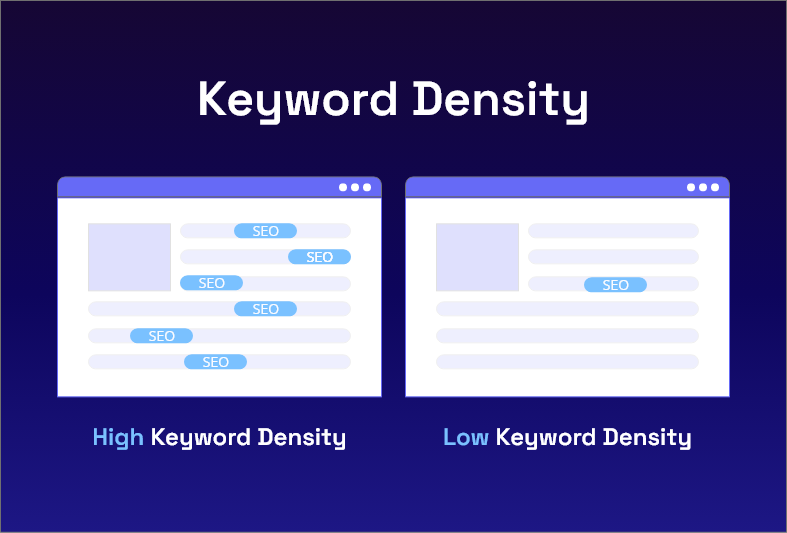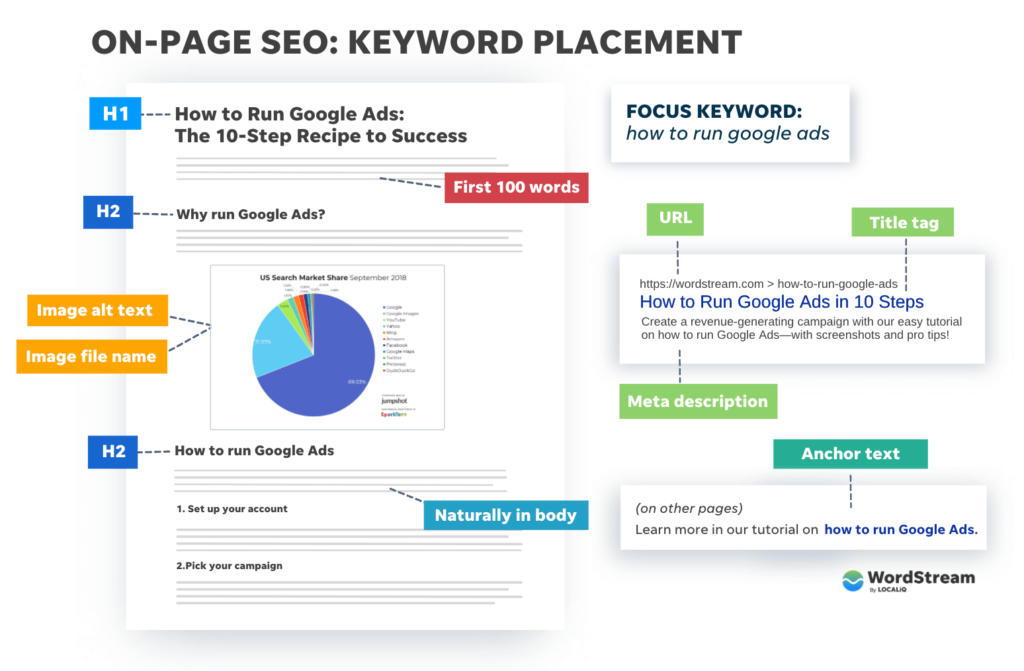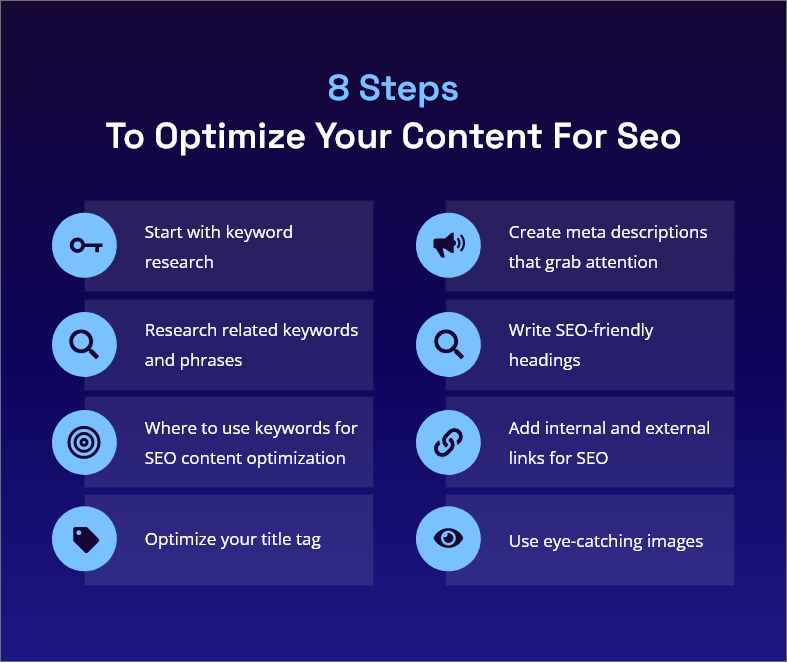Practical Tips On Keyword Placement & On-Page Optimization
When it comes to digital marketing, there’s a lot to keep up with. One of the things that can really make a difference in how your website shows up in search engine results is something called on-page content optimization. And at the heart of that is keyword placement. But where should keywords be placed?
-
 Chrisa
Chrisa

What is On-Page Content Optimization
On-page optimization simply means optimizing individual pages of your website to improve their ranking on search engines. It’s like putting your best foot forward and making sure your website is well-organized and easy to understand for search engines and visitors alike. This involves optimizing different elements on your page, such as the title, description, content, images, and links. By doing this, you can help search engines understand what your page is about and rank it higher in search results.
➡️ Read More: Front-end optimization can help improve user experience and overall website performance. Find out here.
Why Keyword Placement Matters for SEO
So, keyword placement is like a guide for search engines, letting them know what your content is all about. By including relevant keywords in your content, you’re telling search engines what your content is about. And when users search for things related to your keywords, your content is more likely to appear at the top of the search results page.
But why does this matter? Well, the higher up your content appears in search results, the more likely people are to click on it and visit your website. And the more people visit your website, the more likely you are to generate leads, sales, or whatever action you want your visitors to take.
Understanding Keyword Density
However, it’s not just about stuffing your content with keywords. Overusing keywords can actually harm your website’s ranking. That’s why it’s important to strike a balance between using keywords and maintaining the readability of your content. At our marketing agency, we recommend aiming for a keyword density of 1% to 2% in your content. This means that your keywords should make up between 1 to 2 out of every 100 words on your page. That way, your content will be visible to search engines without compromising its readability.

Our Tips for Effective Keyword Placement
SEO Audit & Research
In our SEO audit and research phase, we carefully look at your website’s content and SEO tactics, while also studying what your competitors are doing with their keywords and content. This helps us spot where your website is doing well, where it needs improvement, and where there are opportunities for better keyword placement.
By keeping an eye on how your website ranks in Google search results for specific keywords, we can see how our strategy is working and make any necessary tweaks to boost your website’s visibility and ranking. Our goal is to make sure your content is set up in a way that attracts more visitors from search engines and helps your website climb higher in search results.
Comprehensive Keyword Research
To effectively place keywords on our clients’ websites, we continue with thorough keyword research. We use tools like Ahrefs, SEMrush, and Google’s Keyword Planner to identify the most relevant keywords for their target audience. This involves looking for niche keywords that are specific to their industry and easy to target. For instance, if our client runs let’s say a pet store, we might want to include keywords like “dog food,” “cat toys,” or “bird cages.” These are all phrases that people might search for when looking for pet-related products.
Additionally, we analyze competitive keywords to understand what similar businesses are targeting and where there may be opportunities to differentiate, which helps us create a comprehensive keyword strategy that maximizes our clients’ visibility and attracts the right audience to their websites.
Relevant Keywords in Title, URL, and Meta Tags
Once we’ve identified our clients’ keywords, it’s time to incorporate them into their content. This means including them in their title, URL, and meta tags. For example, if our client wants to write a blog post about “the best dog food for senior dogs,” we might suggest a title like “The Top 5 Senior Dog Foods for Optimal Health.” In this title, we’ve included their keyword (“senior dog food”) while also making it catchy and attention-grabbing.

© Image_wordstream.com
- Relevant Keywords in the Title: Your title is the first thing people see when browsing, so including relevant keywords in your title not only helps search engines understand your content but also attracts readers to click and read your content.
- Keywords in the URL: Search engines check URLs first, so adding relevant keywords to your URL helps search engines quickly understand your page while also making your URL easy for visitors to remember and understand.
- Keywords in the Meta Tags: Meta tags are like hidden codes that help your website rank higher in search results. Including relevant keywords in your meta tags helps search engines know what your page is about, however, be careful not to overdo it and make sure your tags accurately describe your content.
- Keywords in the First Paragraph: Search engines pay a lot of attention to the beginning of your content, so placing relevant keywords in the first paragraph helps search engines understand your content better. But it’s important to use keywords naturally, fitting them into the context of your writing.
- Keywords in Headings and Subheadings: Headings and subheadings help organize your content and make it easier to read. Search engines pay attention to them to understand your content better. Including keywords in headings and subheadings gives search engines more information about your content.
- Keywords in Image Alt Tags: Last, but not least, alt tags are descriptions for images that help search engines understand what they’re about. Including keywords in alt tags helps your images show up in relevant searches. It also makes your content more accessible to people who use screen readers.
Incorporating Keywords Naturally Throughout the Post
But we don’t stop at the title, URL, and meta tags. We also include our clients’ keywords naturally throughout the actual content. This means weaving them into their sentences and paragraphs in a way that feels natural and readable. Continuing with the example we mentioned above, if our client is writing about “the best dog food for senior dogs,” we might suggest including their keyword in the first paragraph like this: “As our furry friends age, they require special nutrition to keep them healthy and happy. That’s why choosing the right senior dog food is crucial for their well-being.”
“The success of your website largely depends on how well it ranks on search engines. By optimizing your content for search engines, you can improve your chances of ranking higher and attracting more visitors”
Leveraging Long-Tail Keywords
If our client wants to expand their keyword repertoire, we might suggest using long-tail keywords. These phrases are highly specific and cater to niche search queries, which can drive more quality traffic and conversions to their website. For instance, instead of using a generic phrase like “dog food,” we might suggest a long-tail keyword like “grain-free dog food for puppies with sensitive stomachs.” This phrase is more specific and targeted, which can attract people who are looking for exactly what our client offers.
What’s a Content Strategy & Why Do you Need One?
Updating your website content isn’t just a nice-to-have; it’s a must for building trust, boosting your domain authority, and keeping those search engines happy. By optimizing your content effectively, you can improve your website's search engine rankings and attract more visitors. Check out our blog to find out more.
Common Mistakes to Avoid When Optimizing Your Content
- Keyword stuffing: This refers to the practice of overusing keywords in your content, with the hope of ranking higher on search engines.
➡️ For example, “Our company provides the best pizza in town. If you’re looking for pizza, come to our pizza restaurant. Our pizza experts make the best pizza you’ll ever taste in your life!”
- Duplicate content: This refers to the practice of copying content from other websites or creating multiple pages with the same content.
➡️ For example, copying and pasting product descriptions from the manufacturer’s website or creating multiple pages with the same content but with slightly different wording.
- Ignoring mobile optimization: With more people accessing the internet on mobile devices, it’s important to ensure that your website is optimized for mobile devices.
➡️ For example, having a website that is difficult to navigate on a mobile device or having a website that is not responsive to different screen sizes.
- Not using header tags: Header tags (H1, H2, H3, etc.) help to organize your content and signal to search engines what your content is about.
➡️ For example, not using header tags on a blog post or having multiple H1 tags on a single page.
- Not optimizing images: Images can help to make your content more engaging and appealing to visitors. However, failing to optimize images by not including alt tags and compressing file sizes can result in slower loading times and lower rankings on search engines.
➡️ For example, using large images that take a long time to load or not including alt tags on images.
- Trends & Algorithms: Finally, to sustain the efficacy of our clients’ on-page optimization efforts, we advise them to avoid complacency. We recommend regularly updating their content with new keywords to align with changing search trends and algorithms.
➡️ For example, if we notice that people are searching for “organic dog food” more often than “natural dog food,” we might suggest updating our client’s content accordingly. That way, their website stays relevant and visible to search engines.

Conclusion
In conclusion, keyword placement is an important aspect of SEO optimization that can help improve your website’s visibility and attract more visitors. By optimizing your website’s content and structure, you can achieve better rankings on search engines and ultimately achieve your business goals.
To optimize your website effectively, it’s important to follow our SEO roadmap and implement both on-page and off-page optimization strategies. If you’re looking for an SEO expert to help you optimize your website, be sure to reach out to us.




